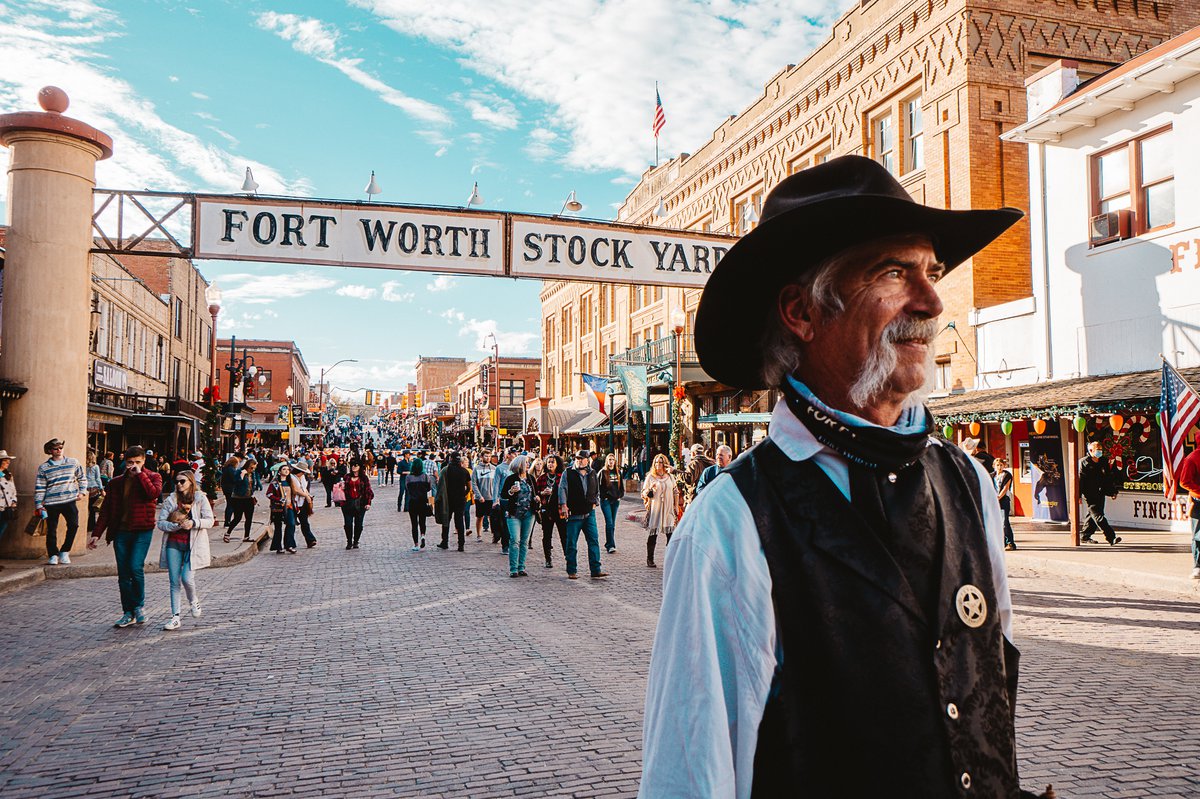Every July, something sacred stirs in the streets of Fort Worth. It isn’t just the midday rumble of longhorn hooves or the flash of silver belt buckles catching the Texas sun. It’s the living, breathing heartbeat of a city that never forgot its roots. On Saturday, July 26, the Fort Worth Stockyards will once again throw open its gates and roll out the welcome mat for the 19th Annual National Day of the American Cowboy, a daylong, citywide roundup of parades, rodeos, poetry, and plain ol’ cowboy grit.
From 10 a.m. to 8 p.m., the Stockyards will host a sprawling celebration that pays tribute to the cowboys and cowgirls who helped build Texas — and the ones still riding strong.
It’s hard to imagine a more fitting place to honor cowboy culture than the Stockyards, where history clings to the limestone walls like dust after a cattle drive. Founded in 1849 by Major Ripley Arnold, Fort Worth was the final “civilized” outpost on the Chisholm Trail — a last chance for drovers to wet their whistles before pushing herds north. By the 1870s, the arrival of the Texas & Pacific Railroad transformed this outpost into an empire. Livestock poured through the pens like water through a spout. And during the Depression, the Stockyards stood tall as the largest livestock trading center in the U.S.
Between the 1880s and the 1950s, Cowtown thrived on cattle, hogs, sheep, and — in the era of warhorses — mules. The Horse and Mule Barns, built in 1912, once housed the nation’s largest market for equines. But by the 1950s, the cowboy’s iron horse had new competition: the truck. Trading drifted to the countryside, and the Stockyards faded into history — as far as the cattle boom goes anyway.
Today, thanks to a sweeping revival, the district feels less like a museum and more like a time machine with Wi–Fi. The lovingly restored Mule Alley now pulses with boot–stomping energy: horses clip–clop past fire pits and patios, live music spills into the streets, and the flagship Hotel Drover serves as a modern homage to the cowboys of old — complete with velvet settees, hand–tooled leather, and s’mores by the creek.
The Cowboy Celebration Parade kicks off at 11:30 a.m., stretching east to west across Exchange Avenue. Red Steagall, Fort Worth’s poet laureate of the plains, will serve as Grand Marshal — fitting, considering cowboy poetry takes center stage at 11 a.m., 1 p.m., and 3 p.m. near the RFD–TV headquarters.
You’ll find armadillo races, face painting, cow milking contests, and rope–rolling for the little ones. For hungry cowpokes, Riscky’s BBQ Rib Eating Contest returns at 11 a.m. — not for the faint of stomach.
The Fort Worth Herd will make its signature cattle drives down East Exchange Avenue at 11:30 a.m. and 4 p.m., while comedy gunfight shows pop off at noon and 4:15 p.m., right outside Stockyards Station.
Inside the Cowtown Coliseum, the Stockyards Championship Rodeo runs at 1:30 p.m. and again at 7:30 p.m., featuring bulls, broncs, and enough grit to sand a barn door. Between those, catch a sunset set from the Monty Dawson Band at 4:30 on the Entertainment Plaza stage.
With more than 50 shops and 46 restaurants packed into the district, there’s no shortage of places to outfit yourself in fringe or refuel with chicken–fried steak. The John Wayne: An American Experience exhibit, now newly expanded, offers a deeper dive into the Duke’s legacy, while the Stockyards Museum and historical walking tours let you trace the true story of Cowtown.
For those wanting a ride of their own, there are horseback and pony rides, mini trains, stagecoaches, and even the time–honored test of Texan toughness: the mechanical bull.
Finish the day the cowboy way: with a cold drink and live music at Billy Bob’s Texas, where ’90s alt-rockers Deep Blue Something hit the stage at 10 p.m.
While July 26 offers a full day of cowboy revelry, the Stockyards are no longer a once–a–year pilgrimage. Thanks to the revival of Mule Alley and the addition of destination spots like 97 West Kitchen & Bar, Fort Worth has crafted a version of the Old West that’s both true to its roots and unmistakably modern.
